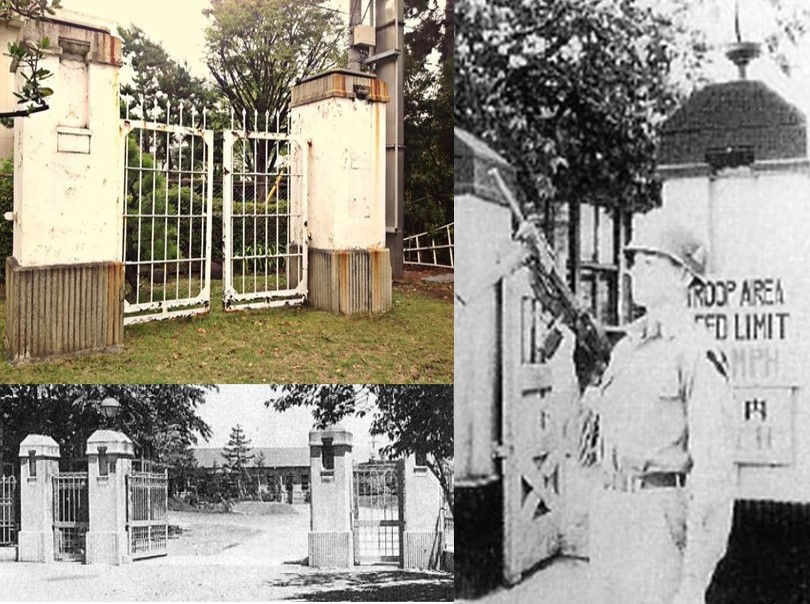Hiratsuka City, Kanagawa, Japan
- Tony Boccia
- Jul 19
- 3 min read
Today we’re looking at Hiratsuka 平塚市, a coastal city situated at the mouth of the Sagami River in Kanagawa Prefecture. Within an hour's drive of NAF Atsugi and Camp Zama, Hiratsuka may not be a major city, but has a lot of historical importance in the region, and in the study of the Second World War. The city received an outsized amount of attention during the Allied bombing campaign, and the two reasons for this are Hirtatsuka's wartime industrial output, and its location.
The principal military industrial site in Hiratsuka lay to the north of the city at the Naval Ammunitions Arsenal 平塚海軍火薬廠. Initially, this was a joint British-Japanese venture intended to outfit the Imperial Japanese Navy (IJN) with weapons for the Russo-Japanese War of 1904-5; later in 1919 the IJN purchased the plant outright. The Navy's Technical Department 艦政本部 managed this facility, in which seven plants manufactured smokeless powder, machine gun ammunition, naval artillery shells, and various chemicals. They also designed and built prototypes for weapons testing.
The site of the Naval Arsenal is currently home to the Yokohama Rubber Company, who took over the site in 1952, following the end of the Allied Occupation. The company has preserved several sites on the grounds as historical monuments, including one of the few Meiji-era buildings remaining in Hiratsuka; the link to that page can be viewed here.



Also located in Hiratsuka was the Japan International Aircraft Industries , responsible for designing, testing, and building aircraft for the Japanese armed forces under the Nissan group. Founded in 1937, this small factory built mostly light aircraft and trainers, including the Ki-59 (Light Transport), Ki-76 (Light reconnaissance), Ki-86 (Trainer), Ki-105 (Transport) and the Ta-Go Kamikaze strike aircraft. A report from the U.S. Strategic Bombing Survey on the network of aircraft plants can be found here,

Hiratsua's location on the south coast of the Kanto Plain can only truly be appreciated when looking at a geographical relief map. The Kanto region is mostly flat compared to the mountain ranges to its north and west, and at 17,000 square kilometers is not only nearly the size of Shikoku (18,300 sq km) but also dwarfs other flat areas of the country such as Ishikari (4,000 sq km) and Tokachi (3,600 sq km). Kanto is home to the majority of Japan's population, centered around Tokyo prefecture. Yokohama, Kawasaki, and Sagamihara in Kanagawa Prefecture also host large populations here.

Due to its expansive, flat beaches and lack of mountains and ridges and proximity to important bases such as Yokosuka and Atsugi, Hiratsuka was a planned landing site for the invasion of Japan, codenamed Operation Downfall. This plan called for huge numbers of troops, and the use of chemical, biologican, and nuclear weapons in order to bring Japan to its knees. Eventually Downfall was scrapped as it became clear to Allied planners just how far Japan was willing to go in order to sacrifice its people in defeat. Strategists turned to aerial-launched nuclear weapons, first over Hiroshima and later, Nagasaki, to force Japan to end the war.
Hiratsuka suffered greatly as a result of all this. On July 16, 1945, 138 B-29's dropped 1,173 tons of incendiary bombs (447,716 in total). Only 5% of the bombs targeted the naval arsenal or aircraft plant, the rest were dropped on the civilian population. The U.S. Strategic Bombing Survey concluded that 44.8% of the city had been destroyed and 228 people killed.
14 days later, a second bombing targeted the Nissan aircraft plant. A final strike occured at the same location on the 13th of August. I cannot, and will not, attempt to paraphrase the statements of those who survived this indiscriminate killing that night; the testimonies have been published, and centralized here. A link to the U.S. Strategic Bombing Survey report on the bombings can be found here.

Hiratsuka is a must-visit for anybody stationed in the Kanto area, whether that be Atsugi, Zama, Yokosuka, or Yokota. It's on the road to Odawara and Hakone, as well as being close to several excellent beaches and beautiful coastal scenic areas. I hopy you all find your way there, and check out some of the local and regional history while you're at it!





Comments